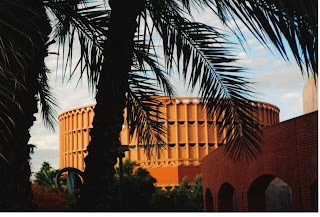
In the mid-1960s, my family moved to a suburb of
Oakland, California, for what my parents called our ‘
California vacation.’ Two years later we moved to
Pittsburgh, Pa. Thirty years later, I revisited the Bay Area with a close friend.
We sought a lunch spot in San Francisco’s Chinatown, and one block seemed hauntingly familiar. I remembered eating Chinese food there with my elementary school Girl Scout troop. Our waiter taught us how to use chopsticks correctly and I tried in vain to pick up bits of chicken and vegetables. But, by the end of the meal, I had abandoned my fork.
My elementary school had a sister school in Japan, so I joined a singing group that learned and performed Japanese songs. I loved to wrap my tongue around the unusual syllables and know my words made sense in another country. I used those words again, a decade later.
While I worked towards a master’s degree in speech pathology, I lived in an international dormitory. As my Japanese roommate moved into our room, an Iranian friend repeated the words of ‘Sakura,’ a popular Japanese song, through the intercom – under my direction. The year I spent living with students from Japan, Quebec, Canada; Micronesia, Thailand, Nigeria, Iran, Iraq and China taught me more about life than anything I’d ever learned in a classroom.
Six years ago, a Pakistani friend from the dorm and I rekindled our friendship via email. He later visited our home and cooked for me, my husband and our teenage daughters.
Last week, my husband and I hosted ambassadors from U.S. embassies in Japan and Pakistan for Sunday dinner. As we talked and laughed throughout the evening, I once again felt at home.
 I have lived in Midwestern cities for more than 35 of my 50+ years, and our 20-something daughters grew up in the Kansas City area. As college approached, both girls chose out-of-state schools. Our 'Arizona daughter' moved to a whole other world of climate and vegetation.
I have lived in Midwestern cities for more than 35 of my 50+ years, and our 20-something daughters grew up in the Kansas City area. As college approached, both girls chose out-of-state schools. Our 'Arizona daughter' moved to a whole other world of climate and vegetation.





























